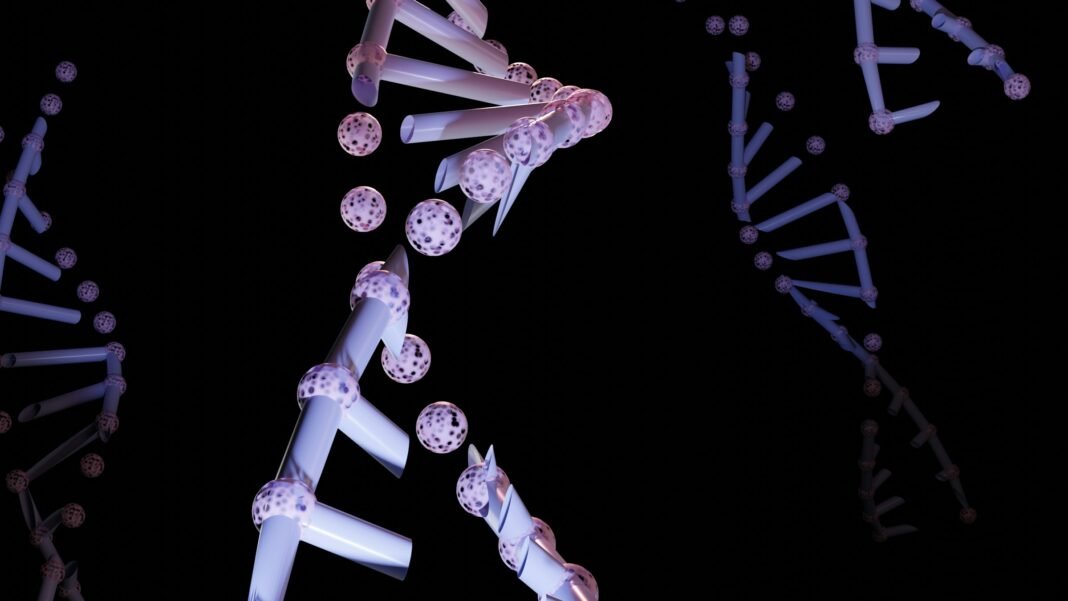Human beings have been trying to decode the secret to a long life since the beginning of recorded history. While modern medicine has dramatically extended our average lifespan, the upper limits of human longevity still seem to hover in the same zone. The rare centenarian, the even rarer supercentenarian, and the handful of families where old age seems to run like clockwork—these are the cases that spark a recurring question in labs across the globe: how much of that longevity is inherited, and how much is simply luck, environment, or choice?
How much of a long life is written in your genes? Explore what science says about telomeres, epigenetics, heritability, and the real genetic limits of human lifespan—and why your lifestyle still matters more than you think.
Aging, after all, isn’t a single pathway. It’s a slow, tangled web of cell senescence, genetic drift, epigenetic noise, and systemic wear. When scientists ask if our genes decide how long we’ll live, they’re really asking a series of layered questions—starting with what’s hardwired in our DNA and ending with how that code is read, skipped, or edited across a lifetime.
Table Of Contents
Telomeres Are Not a Stopwatch, But They Still Matter
Telomeres have become the media darlings of aging research, often cast as the ticking clocks that determine our biological expiration date. That framing isn’t exactly wrong, but it doesn’t capture the full story. These repetitive nucleotide sequences cap the ends of our chromosomes like the plastic tips of shoelaces. Every time a cell divides, those caps fray a little more. Eventually, the exposed chromosome ends trigger a kind of internal panic: the cell either dies or enters a dormant state.
It sounds simple, but the rate of telomere shortening varies from person to person. Some of that is clearly genetic—variants in the TERT gene, for instance, influence the activity of telomerase, the enzyme that patches up telomeres in some cells. But lifestyle and environment press just as hard on the gas pedal. Chronic stress, smoking, poor diet, and even loneliness can accelerate telomere erosion.
The catch is that while shorter telomeres are associated with age-related diseases, simply having longer telomeres doesn’t guarantee you’ll live longer. Some cancers, in fact, hijack the telomerase system to become virtually immortal. So while telomeres are certainly a piece of the longevity puzzle, they’re not the whole picture—and they aren’t the strongest predictor of exceptional age.
What Heritability Really Tells Us About Lifespan
One of the more stubborn misconceptions in public conversation is the idea that if your parents lived a long time, you probably will too. That’s only partially true. Twin studies and family cohort data suggest that the heritability of human lifespan is modest—hovering somewhere between 15% and 30%. In other words, your genes may give you a slight edge, but they won’t get you across the finish line by themselves.
That said, recent genome-wide association studies (GWAS) have identified several genetic markers that correlate with increased lifespan. The problem is that no single variant tells the full story, and many only show small effects. Longevity is polygenic, meaning it’s shaped by a complex interplay of many genes, most of which have effects that are context-dependent.
This is where the data from newer DNA synthesis companies becomes especially interesting. With access to massive volumes of synthetic and natural sequence data, researchers are now better equipped to model how specific combinations of gene variants behave under different environmental pressures. It’s not just about individual “longevity genes” anymore—it’s about patterns, networks, and thresholds of genetic resilience.
The Epigenetic Clock Tells a Deeper, Messier Story
If telomeres are the shoelace tips, epigenetics is the lacing pattern—and in aging research, the lacing is where things get complicated. Epigenetic changes don’t alter the DNA sequence itself, but they do change how that sequence is interpreted. DNA methylation, for instance, can silence or activate genes depending on where and when it occurs. Histone modifications and chromatin remodeling add even more layers of regulation.
The so-called “epigenetic clock” is a way to measure biological aging by looking at DNA methylation patterns. Unlike telomere length, which offers a more binary metric, epigenetic changes can reveal subtle differences between biological and chronological age. You may be 50 years old, but your cells might read like they’re 40—or 60.
The catch is that epigenetic marks are incredibly sensitive to lifestyle. Diet, exercise, sleep, toxin exposure, and emotional stress all leave fingerprints. But here’s the twist: some of these fingerprints can be passed down. Transgenerational epigenetic inheritance is still controversial in humans, but it’s clear in animal models. It muddies the waters on what’s “genetic” and what’s not.
You can inherit a certain vulnerability or resilience without inheriting the underlying DNA change. That means our understanding of aging has to move beyond the binary of nature vs. nurture. It’s often both, interacting in ways we’re only beginning to map.
The Gender Gap in Lifespan Isn’t Just About Hormones
Statistically, women live longer than men almost everywhere on Earth. Theories abound: hormones, risk behavior, occupational hazards, even iron levels. But genetics plays a role too, and it’s not just about X chromosomes and estrogen. Mitochondrial DNA, which is inherited maternally, has been underexplored in longevity studies for decades. We now know that subtle variations in mitochondrial function can shape everything from metabolism to oxidative stress, which directly impacts aging.
On top of that, the sex-based expression of longevity-related genes is more variable than we once thought. Genes involved in inflammation, for instance, are regulated differently in males and females. That matters, because chronic low-grade inflammation—what some researchers call “inflammaging”—is increasingly recognized as a driver of age-related decline.
Understanding how gene expression shifts across sexes might eventually lead to personalized interventions in aging, but we’re not there yet. The data is still young, and most of it hasn’t been tested longitudinally.
What Genetics Can—and Can’t—Do for Lifespan Prediction
This brings us to the question no one wants to answer definitively: can your DNA predict how long you’ll live? Not with any meaningful accuracy. At least, not yet. While paternity testing has become a cheap and fairly conclusive use of genetic tech, lifespan prediction is still loaded with guesswork, caveats, and statistical hedging.
Even the most advanced polygenic risk scores for longevity can only offer probabilities, not timelines. They can tell you if you’re statistically more likely to reach your 90s than someone else with different variants, but they can’t account for the truck you didn’t see coming, the infection you didn’t expect, or the lifestyle choices you made at 27 that you forgot about by 47.
There’s promise, of course. And the more we learn about the human genome, the more refined our models will become. But at this moment in time, genetics can’t predict your death date. It can only suggest the cards you’ve been dealt—and not even all of them.
Bringing It All Together
Genetics shapes lifespan the way ingredients shape a meal. Important, yes. Defining, sometimes. But it’s the preparation, the timing, and the heat that determine how everything turns out. While your DNA can open certain doors—or close them—it doesn’t decide your entire outcome. Not on its own.
There’s power in knowing that. Because if your genes don’t lock in your lifespan, then maybe your choices matter more than you thought.



